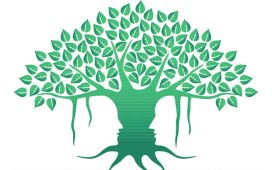
Chhattisgarh, which has a rich tribal heritage, celebrates Munda as an icon of resistance and empowerment. His ideals continue to drive the development agenda in Chhattisgarh as tribals in the state see him as a symbol of unity and pride, inspiring their fight for socio-economic equality and cultural preservation.
Drawing inspiration from his ideas, several welfare initiatives are underway in Chhattisgarh to support the development of the tribal society, which constitute nearly 30% of the state’s population.
The Chhattisgarh government is committed to empowering tribal communities by launching welfare schemes that enhance self-reliance and economic growth. Issuing Forest Rights Certificates, focusing on agriculture, livestock, and health are part of such schemes. The state has introduced initiatives supporting poultry, goat, pig, and dairy farming, enabling farmers to diversify income sources and improve their livelihoods. Additionally, a unique effort to boost traditional crops like Jimikand, turmeric, and tikhur has been initiated with training programs helping tribal farmers secure better livelihoods while contributing to the economy. Mahatari Vandan Yojana, through which tribal women are provided financial assistance of ₹1,000 per month, are key initiatives aimed at promoting self-reliance and economic empowerment, allowing tribal people to lead dignified lives while preserving their cultural heritage.
Under the Dharti Aaba Tribal Village Utkarsh Yojana, thousands of tribal families have benefitted from support measures, including livelihood generation and access to better infrastructure. In Chhattisgarh, 6,691 tribal villages will benefit from improved basic amenities and welfare programmes for tribal communities.
The state has been promoting educational initiatives like medical studies in the tribal regions, ensuring that tribal children can study in their native languages, including Hindi, thus removing barriers to education. Chhattisgarh is setting new standards with the establishment of 75 Eklavya Adarsh Residential Schools and 15 Prayas Residential Schools in Maoist-affected regions. These institutions aim to provide tribal children with quality education and opportunities to compete at higher levels.The state also promotes cultural festivals and the preservation of tribal traditions, ensuring their heritage remains vibrant. The Shaheed Veer Narayan Singh Special Health Assistance Scheme is providing financial assistance of up to ₹20 lakh for the treatment of serious diseases in poor tribal families.Another initiative under the government’s focus is the Niyad Nellanar scheme, focusing on rural and tribal development. Crucial facilities like housing, healthcare, and education are being provided to 96 villages in Maoist-affected areas, significantly improving the quality of life for these communities.
The forest resources of Chhattisgarh are a key part of tribal life. In a bid to ensure fair pricing for forest products, the government has increased the rate for the collection of tendu leaves from ₹4,000 to ₹5,500, benefiting more than 12 lakh families.
In a significant move to support farmers, 2,739 procurement centers across Chhattisgarh are offering paddy at the support price of ₹3,100 per quintal. The recently celebrated ‘Dhaan Kharidi Mahaparv’ marks the start of paddy procurement from farmers across Chhattisgarh. On its first day, 55,000 metric tonnes of paddy were procured from 14,562 farmers across the state, with a total of 24,748 tokens issued. Approximately 27.68 lakh farmers have registered for this Kharif season, including 1.42 lakh new registrants, marking an increase in participation in this agricultural cycle. The recently-launched industrial policy of Chhattisgarh reflects a commitment to tribal development through increased economic opportunities and job creation. Concessions for establishing industries in tribal areas are designed to drive local employment and economic growth.
Additionally, initiatives supporting traditional tribal art, handicrafts, and forest product processing help promote cultural heritage while promoting economic independence for tribal artisans. Established as a separate state under the leadership of Atal Bihari Vajpayee, Chhattisgarh has realised its founding vision by prioritising tribal development. Looking toward 2047, the Chhattisgarh government envisions greater tribal representation in development authorities to ensure that their voices are integral to decision-making.
Efforts to promote local crafts, such as Dhokra art have contributed to social equality and provided tribal artisans with platforms to gain recognition. Through these initiatives, Chhattisgarh honours the legacy of Birsa Munda, aiming to create a future of dignity, self-reliance, and prosperity for its tribal communities.
(The author is chief minister of Chhattisgarh)











